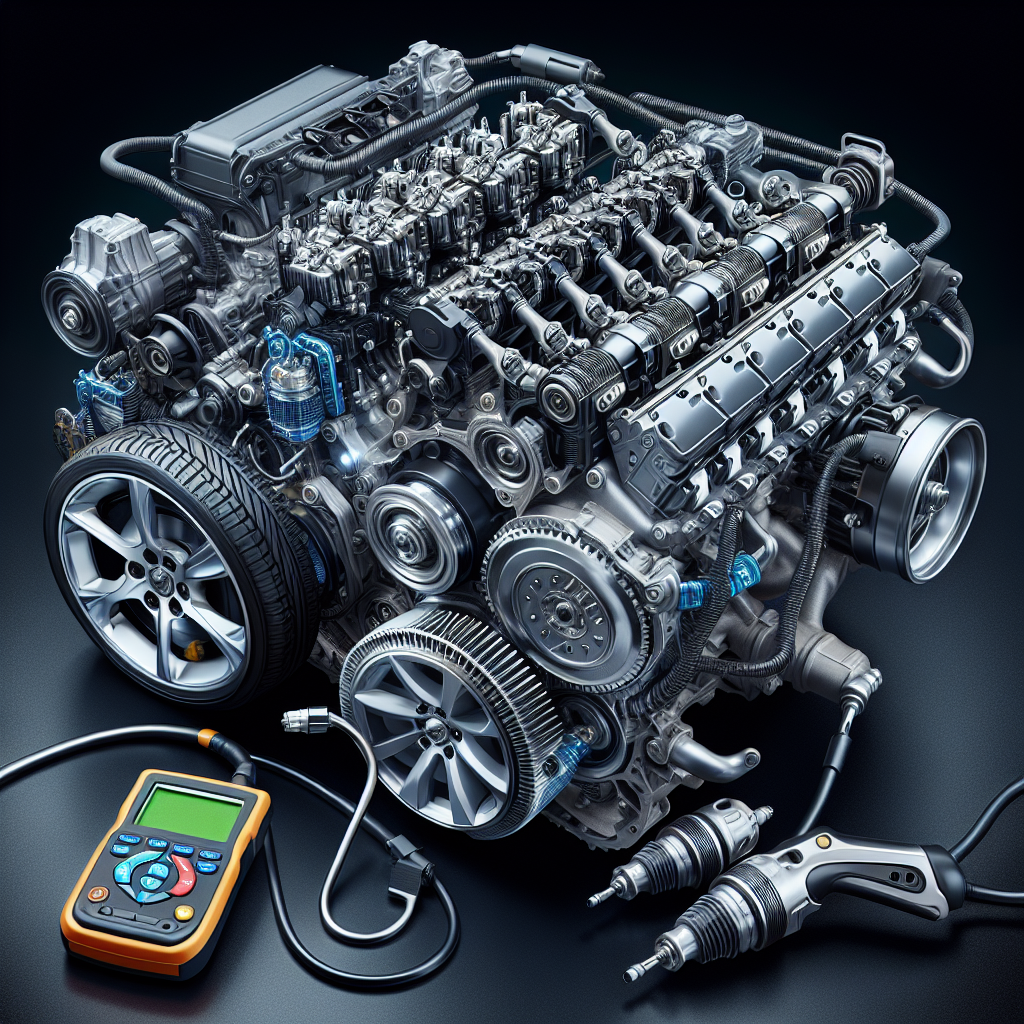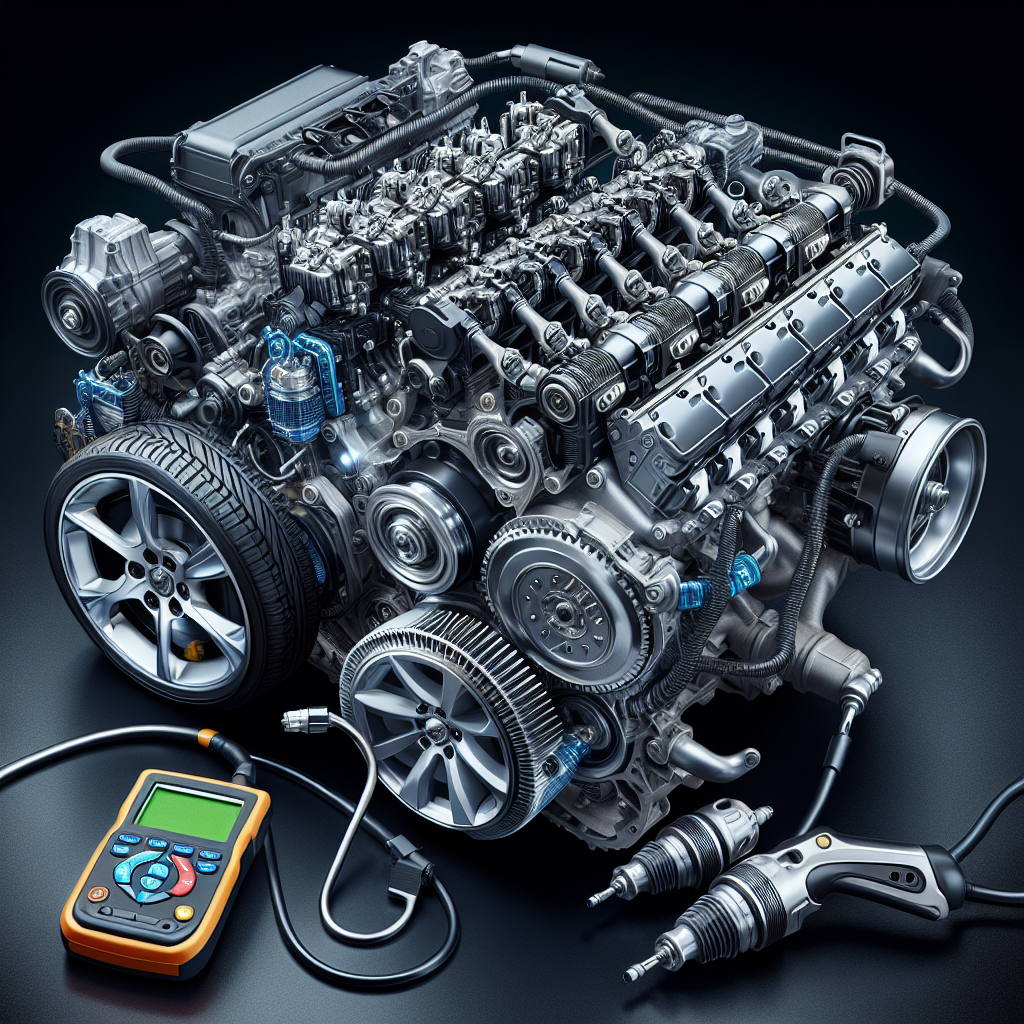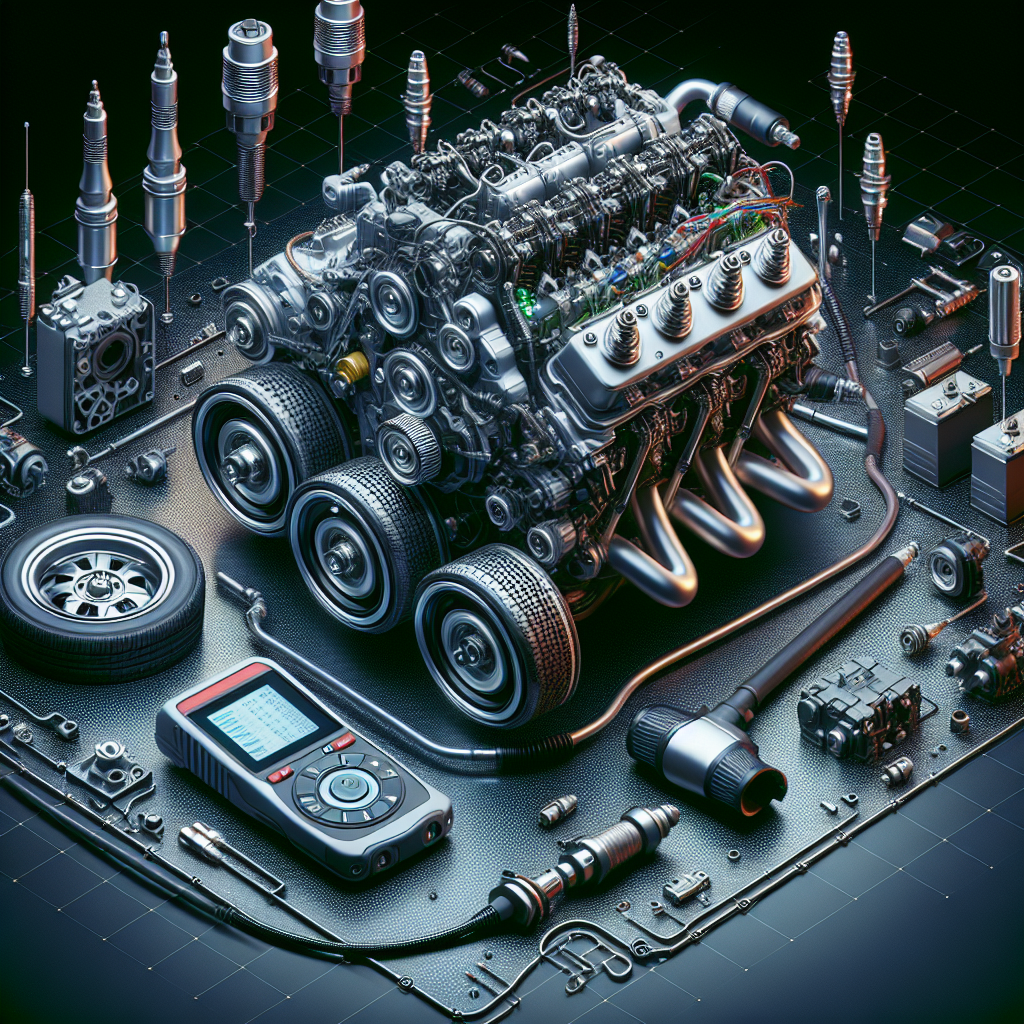
Struggling with a car that just won’t start can be frustrating, but understanding the essentials of diagnosing engine start problems can turn that frustration into accomplishment. This article will guide you through the crucial steps needed to pinpoint what’s keeping your vehicle from roaring to life. From checking the battery to exploring the fuel system, and even ensuring your ignition is on point, you’re about to become well-versed in the common – and not so common – culprits of engine start issues. So grab your toolbox, because it’s time to get that engine up and running!

Understanding Engine Start Problems
When you turn the key in your ignition, or press the start button, you fully expect your engine to roar to life. But what do you do when nothing happens or the engine struggles to start? Understanding the potential reasons behind engine start problems can save you time and frustration.
Categories of Engine Start Problems
Engine start problems usually fall into a few key categories. It could be an issue with the battery or electrical system, the fuel delivery system, the ignition system, the air intake and exhaust system, the engine timing and compression, the starting system and flywheel, the computer systems, or a combination of these factors. Each category requires a specific diagnostic approach to identify the underlying problem.
Common Symptoms and Complaints
You may encounter a variety of symptoms that signal the start of a problem. This could be the engine cranking slowly or not at all, the smell of gasoline, or perhaps the engine is turning over but won’t start. Listening closely to your car’s complaints and observing these symptoms can help pinpoint where the issues may lie.
The Engine Start Process Overview
Understanding the engine start process is key to troubleshooting. When you initiate the start sequence, the battery sends power to the starter motor, which then turns the engine. The fuel and ignition systems work in harmony to create a controlled explosion in your engine’s cylinders, and this ignites the air-fuel mixture, propelling your vehicle forward. A glitch at any point in this process can prevent your engine from starting.
Initial Diagnostic Checks
Before you get to work with tools, conduct some initial diagnostic checks that are simple yet crucial for uncovering issues.
Visual Inspection
Start with a visual inspection of your engine bay. Look for obvious signs of damage such as frayed belts, disconnected wires, or corrosion. Check the oil and coolant levels too, as low levels may indicate a problem.
Listening for Unusual Noises
Turn the key and listen. Do you hear a clicking sound, or perhaps a series of rapid clicks? This often points to a dead battery or bad starter. If the engine cranks normally but doesn’t start, the problem may be with the fuel or ignition system.
Checking for Warning Lights on Dashboard
Your dashboard is engineered to communicate with you. Look for warning lights such as the check engine light or battery light, as they can provide the first clue that something is amiss.
Battery and Electrical Systems
The battery and electrical systems are the lifeblood of your vehicle’s starting process.
Testing Battery Voltage and Health
Grab a multimeter and test your battery’s voltage. A healthy battery should read around 12.6 volts when the engine is off. Anything significantly lower may indicate a weak or dying battery.
Checking Electrical Connections and Terminals
Examine the battery terminals for corrosion or loosening. Corroded or loose terminals can disrupt electrical flow. Clean and secure them as necessary.
Evaluating the Starter Motor and Solenoid
If the battery checks out, assess the starter motor and solenoid. These should produce a strong cranking motion when the key is turned. Weak or no movement could signal a malfunction in either of these components.
Fuel Delivery System Assessment
Your engine needs fuel to function. Let’s make sure it’s getting what it needs.
Checking Fuel Level and Quality
This might seem obvious, but ensure you have enough fuel in the tank. Also, poor fuel quality can cause engine start issues, so consider the type and age of the fuel in your vehicle.
Inspecting Fuel Pump and Pressure
The fuel pump delivers fuel from the tank to the engine; a whirring noise from the back of your car when you turn the key to the “on” position generally means it’s working. However, proper fuel pressure is also needed, which should be checked with a fuel pressure gauge.
Examining Fuel Injectors for Proper Function
Fuel injectors can become clogged or fail. Crank the engine while observing if they are delivering fuel. This might require professional diagnostic tools to test properly.

Ignition System Troubleshooting
The ignition system ignites the fuel inside the engine cylinders to start your car.
Inspecting Spark Plugs and Wires
Remove and examine the spark plugs for wear and proper gap. Check the wires as well for any signs of wear or damage. Faulty plugs or wires can prevent the engine from starting.
Testing Ignition Coils and Distributor
Ignition coils transform the battery’s low voltage to the thousands of volts needed to create an electric spark in the spark plugs. A failure here can prevent start-up. If your vehicle uses a distributor, check for moisture or damage within the cap.
Diagnosing Issues with the Ignition Module
The ignition module controls the ignition coil or coils and can fail without warning. Testing this may require specialized equipment.
Air Intake and Exhaust System Check
The engine needs to breathe, taking in air for the combustion process and expelling exhaust gases.
Inspecting Air Filter and Intake Manifold
Ensure the air filter is clean and free of debris. A clogged filter can suffocate the engine. Also, examine the intake manifold for cracks or leaks.
Checking for Blocked or Damaged Exhaust
A blocked exhaust system can create backpressure, preventing the engine from starting. Listen for unusual noises that could indicate damage or blockages.
Evaluating Sensors: MAF, MAP, and O2
Modern vehicles rely on numerous sensors to regulate air and fuel delivery. Check sensors like the Mass Air Flow (MAF), Manifold Absolute Pressure (MAP), and Oxygen (O2) sensors to ensure they are functioning correctly.
Engine Timing and Compression
Engine timing and compression are fundamental for efficient engine starts and operation.
Testing Compression in Each Cylinder
A compression test can reveal a lot about the health of your engine. Low compression in one or more cylinders is often a symptom of internal engine issues that can affect starting.
Checking Timing Belt or Chain for Issues
The timing belt or chain is critical for keeping your engine’s internal components synchronized. Inspect it for wear, damage, or improper tension.
Verifying Valve Timing and Operation
Incorrect valve timing can cause significant starting and running issues. This usually involves more complicated diagnostic procedures and might require professional attention.
Starting System and Flywheel
The starting system and flywheel must be in sync for your engine to turn over.
Examining Starter Motor Engagement
When you turn the key, the starter motor should engage with the flywheel. If it doesn’t, you might only hear a clicking sound, signifying a possible starter motor issue.
Inspecting the Flywheel for Damage
The flywheel’s teeth can wear down or break, making it difficult for the starter motor to engage. If accessible, inspect the flywheel for any signs of damage.
Troubleshooting the Starter Relay and Circuit
The starter relay and circuit serve as the connection between the ignition switch and the starter motor. A fault here can prevent power from reaching the starter motor.
Computer Systems and Diagnostic Codes
Modern vehicles come equipped with advanced computer systems that monitor and control various engine functions.
Using OBD-II Scanner for Trouble Codes
An On-Board Diagnostics II (OBD-II) scanner can retrieve diagnostic trouble codes from your vehicle’s computer system. These codes can provide valuable information about any malfunctions.
Interpreting Diagnostic Trouble Codes (DTCs)
Trouble codes must be interpreted to understand what they indicate about your vehicle’s condition. You may need a repair manual or professional advice for accurate interpretation.
Assessing Engine Control Module (ECM) Functions
The Engine Control Module (ECM) is the brain of your vehicle. If it’s malfunctioning, it could be the reason your engine won’t start. Again, specialized diagnostic tools will be required for assessment.
Best Practices and Preventative Maintenance
To minimize the chances of engine start problems, adhere to a few best practices and preventative maintenance routines.
Routine Inspection Schedules
Regularly schedule and perform routine inspections and servicing on your vehicle. This includes oil changes, fluid checks, and filter replacements, which can keep your engine in top condition.
Keeping Detailed Repair and Service Logs
Maintain detailed records of all repairs and services. Such a log can help track recurring issues and ensure that nothing is overlooked during routine maintenance.
Staying Informed on Manufacturer Recalls and Technical Service Bulletins
Stay abreast of any manufacturer recalls and technical service bulletins for your make and model. These can alert you to known issues and recommended fixes that might prevent future start-up problems.
Diagnosing engine start issues can be a challenging affair, but by methodically working through each potential cause, you can often identify and resolve the problem. Remember, when in doubt, consult with a professional mechanic who can provide the expertise needed for more complex issues. Your diligence will help ensure that you’re met with the reassuring hum of your engine starting smoothly for each journey ahead.

